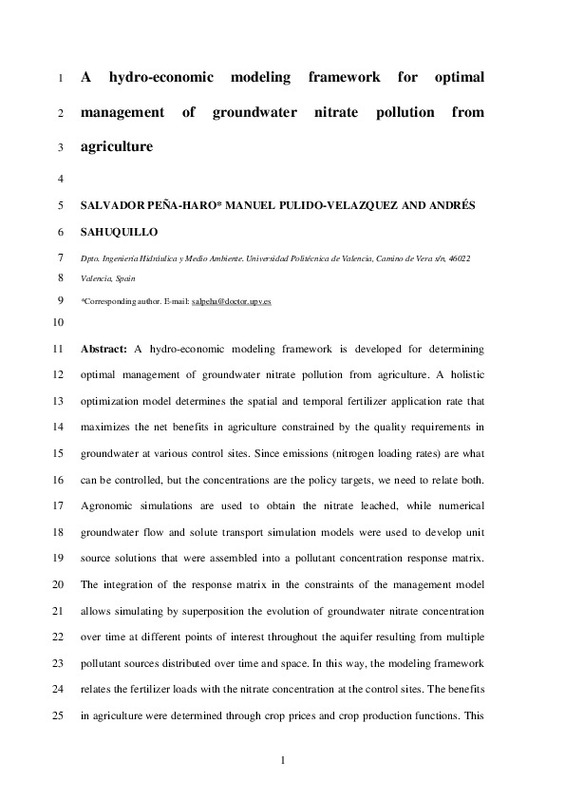JavaScript is disabled for your browser. Some features of this site may not work without it.
Buscar en RiuNet
Listar
Mi cuenta
Estadísticas
Ayuda RiuNet
Admin. UPV
A hydro-economic modelling framework for optimal management of groundwater nitrate pollution from agriculture
Mostrar el registro completo del ítem
Peña Haro, S.; Pulido-Velazquez, M.; Sahuquillo Herráiz, A. (2009). A hydro-economic modelling framework for optimal management of groundwater nitrate pollution from agriculture. Journal of Hydrology. 373(1-2):193-203. doi:10.1016/j.jhydrol.2009.04.024
Por favor, use este identificador para citar o enlazar este ítem: http://hdl.handle.net/10251/63686
Ficheros en el ítem
Metadatos del ítem
| Título: | A hydro-economic modelling framework for optimal management of groundwater nitrate pollution from agriculture | |
| Autor: | Peña Haro, Salvador Sahuquillo Herráiz, Andrés | |
| Entidad UPV: |
|
|
| Fecha difusión: |
|
|
| Resumen: |
A hydro-economic modelling framework is developed for determining optimal management of groundwater nitrate pollution from agriculture. A holistic optimization model determines the spatial and temporal fertilizer application ...[+]
|
|
| Palabras clave: |
|
|
| Derechos de uso: | Reserva de todos los derechos | |
| Fuente: |
|
|
| DOI: |
|
|
| Editorial: |
|
|
| Versión del editor: | http://dx.doi.org/10.1016/j.jhydrol.2009.04.024 | |
| Agradecimientos: |
The authors thank the Editor, Geoff Syme, and two anonymous reviewers for their detailed and helpful comments on improving the paper. Support for this research was provided by the Mexican Ministry of Science and Technology ...[+]
|
|
| Tipo: |
|






![[Cerrado]](/themes/UPV/images/candado.png)



